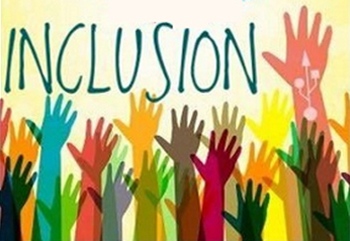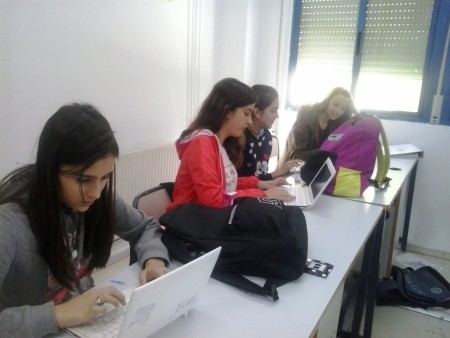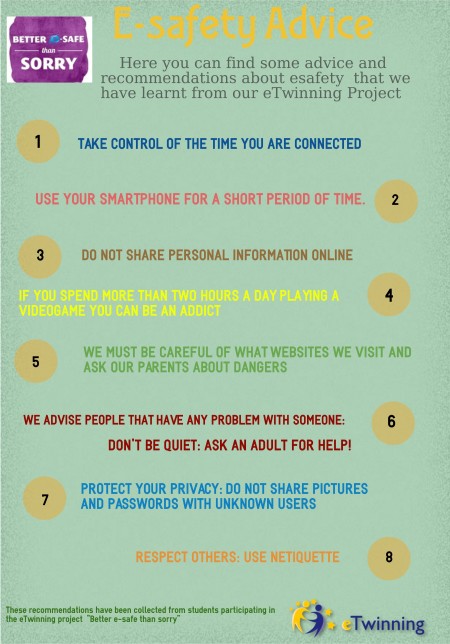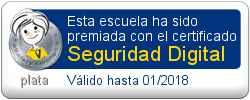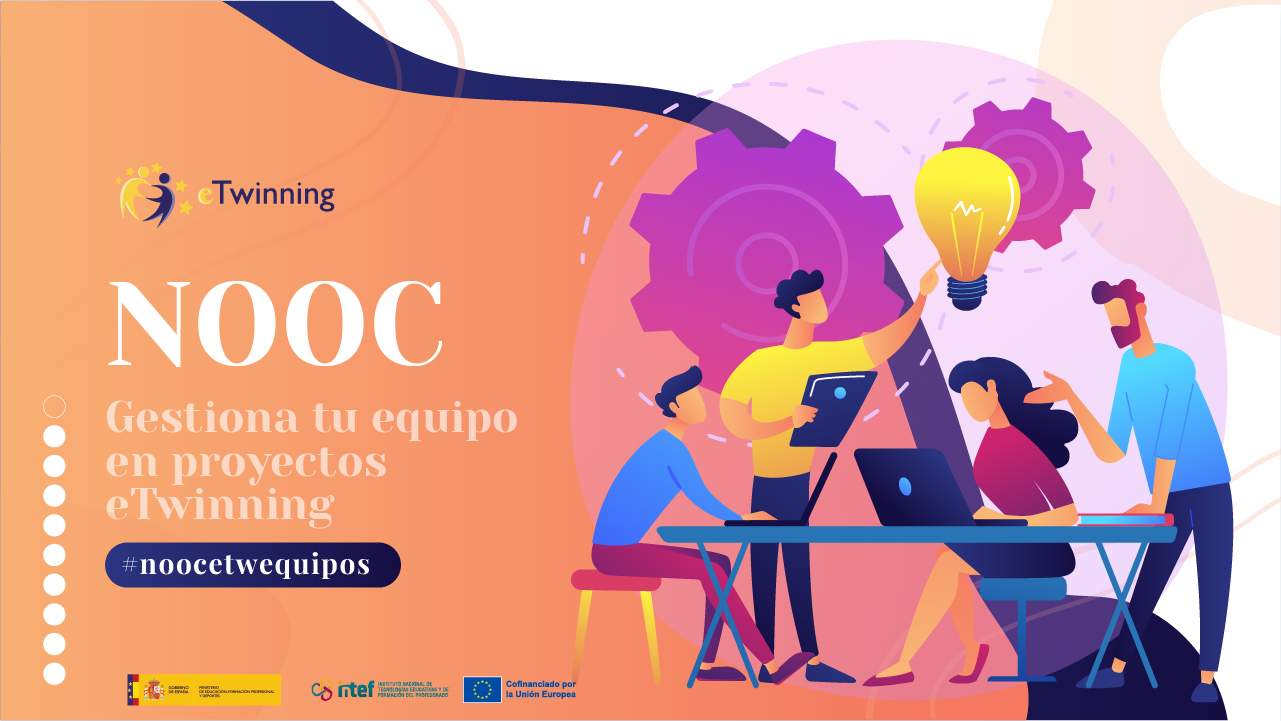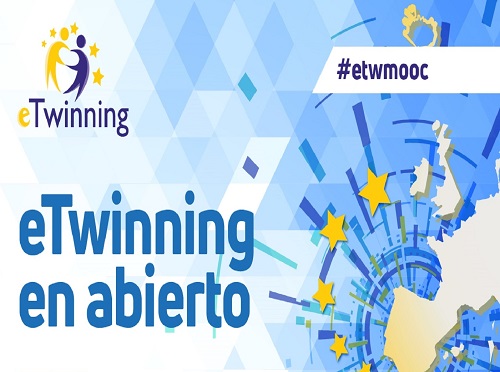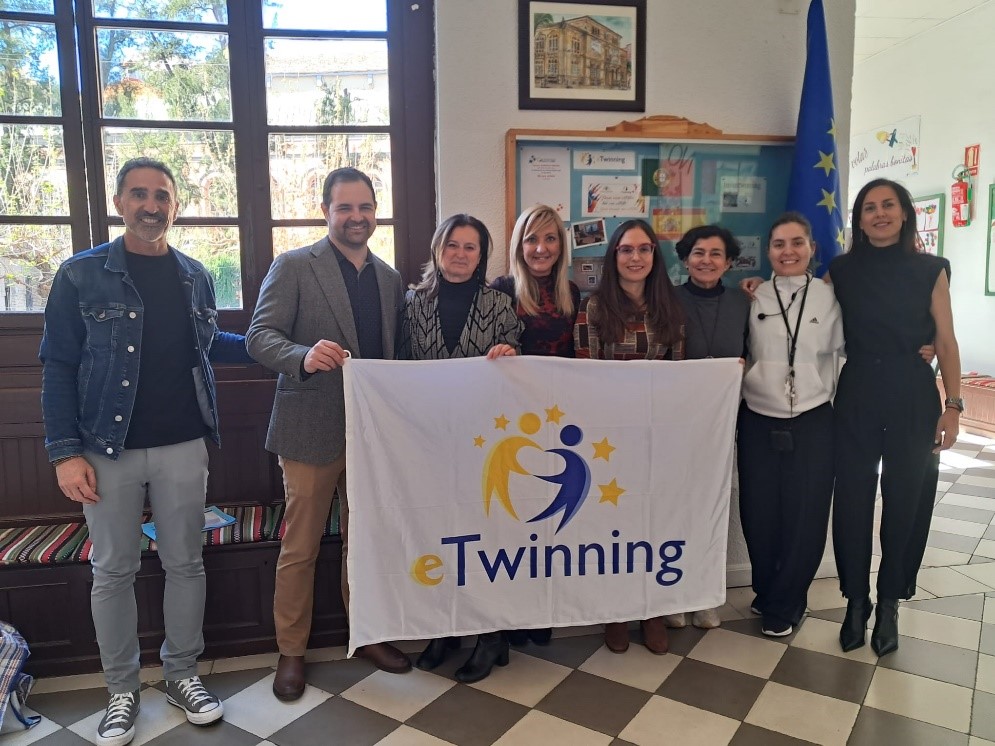Digital citizenship (also called cyber-citizenship or e-citizenship) is defined as the norms of behaviour with regard to the use of technology.
Digital Citizenship involves the understanding of human, cultural and social issues related to the use of Information and Communication Technologies (ICT), as well as the application of behaviours relevant to that understanding and the principles that guide it: ethical, legal, safe and responsible use of the Internet, social networks and available technologies.
Títle of the project:
Use and Abuse of Social Networks and its Impact on Teenagers, Families and School
School:
I.E.S. ISAAC ALBÉNIZ secondary school
Teachers:
64 teachers in the school
Autonomous Community:
Madrid
Partner countries:
Italy
Romania
Educational Stage:
Secondary
Areas/Subjects:
The project is coordinated by English teachers, but as it is the subject of the tutorials all departments are involved.
Language:
English
Description:
The project is basically about training families, teachers and students in the correct use of social networks, to teach them to avoid conflicts arising from their misuse.
We know that our pupils use social networks without any help or training, since those responsible for this role, for educating them, don’t have the necessary information either
Both families and teachers educate pupils from an early age in healthy habits of nutrition, citizenship, hygiene… However, we give them a mobile phone or a tablet without giving them any instructions on how to use it. They use it without any supervision, except for parental controls perhaps for websites with violent or inappropriate content. This is where our education in this subject usually ends. This isn’t enough.
The digital world is complex but knowing some basic principles for safe, responsible and healthy use are essential. New generations must have a digital identity. In today’s world it’s as essential as a CV. But the digital reputation that many acquire using networks improperly might hinder them in the future.
This training of the educational community, through various activities in collaboration with our Romanian and Italian partners, is what we’re carrying out in our project.
It should be noted that we’re at the beginning of the second year of our project and at the moment we can only partially see the results of the project.
The focus during the first year was on families and pupils. During the second year it will be mainly on the teaching staff and there will be a refreshment of the points covered in the first year for families and students.
Link to TwinSpace:
https://twinspace.etwinning.net/11201
Other links
http://www.educa2.madrid.org/web/centro.ies.albeniz.leganes/ (school website)
http://eyeswechoose.blogspot.com.es/ (Project Blog)
Aims:
Our overall aim is to learn how to educate in the safe, responsible and healthy use of technology.
Our specific aims are:
- Provide students with useful and legal information so that they know how to use the networks efficiently.
- Help families and teachers to redirect social behaviours and problems directly associated with the misuse of networks.
- Create a fast, reliable means of communication between school and families.
- Learn and share experiences from international partners about similar social and educational problems.
- Work collaboratively with local, national and international institutions to find solutions to our concerns.
- Modify indications at school and plans related to digital uses.
How did the idea come about to carry out this project?
In recent years, relationship/group problems were detected that, whilst reflected at school, had their starting point outside the school. Since the pupils attending the schools usually come from areas near the school, this means that the personal relationships that are established are, most of the time, friendships outside the school as well. That is, conflicts within groups of friends/acquaintances created outside impact on their behaviour at school.
The fact that most of these relationships take place through social networks, regardless of whether the pupils in conflict are physically separated (in different classrooms/groups), led us to consider the misuse of the digital world. Hence our main aim is to EDUCATE in their correct use. We’re concerned with the safe, responsible and healthy use of technology.
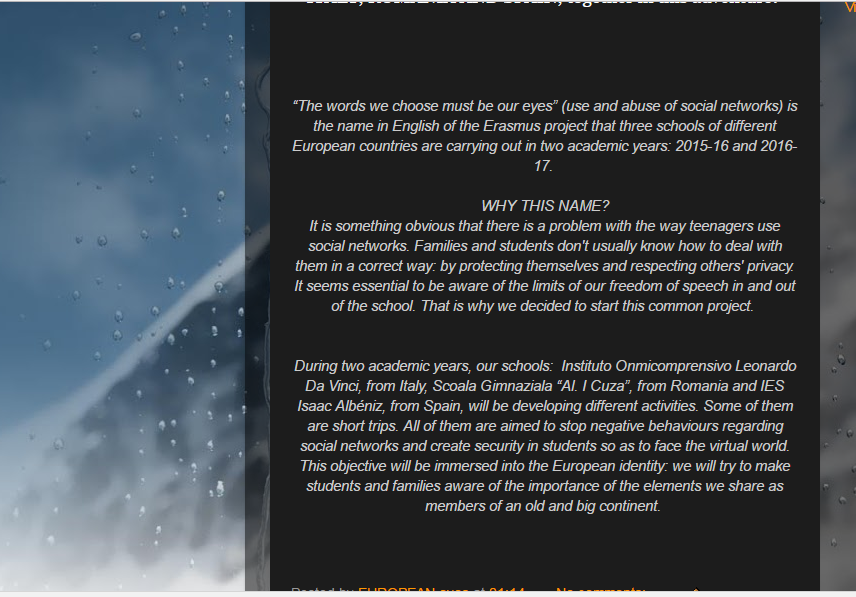
Activities
Talks in the classroom (tutorials, presentations) and outside (Educalike) on the safe, responsible and healthy use of technologies, including the Internet and social networks.
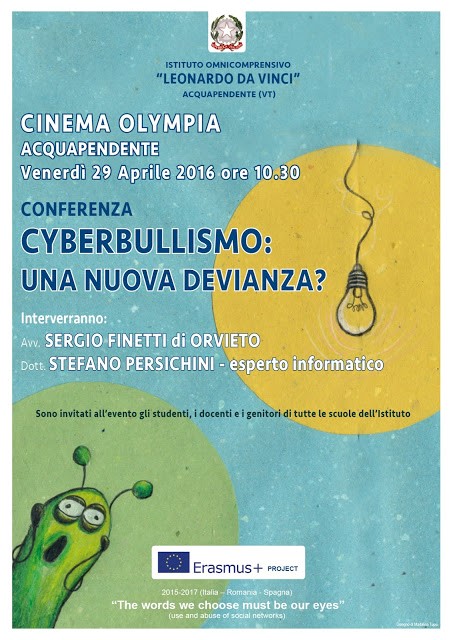
Creation of presentations for partners, questionnaires, networking groups for analysis, an institutional Twitter account (@Albenizprojects), logos, debates, research on certain topics (netiquette, cyberbullying)

Discussions on how our pupils and their families actually use the digital world, creation of questionnaires on this use to share with our partners, analysis of results and comparisons, proposals for solutions, discussions on talks about the subject (Police and Educalike), analysis of results after certain activities (e.g. creation of group/class on Whatsapp and Twitter using Netiquette criteria), discussions on real/simulated situations that reflect conflicts generated in the networks, proposals for the creation of a “handbook” on the correct use of networks.

What role has the school and the teaching staff had in the project towards educating students to be part of a responsible citizenship (e.g. teaching them to prevent risks in the publication of personal information, comments …)?
Although teachers played a great role last year in leading tutoring activities related to the subject, this is the year when they’ll be the key element. They’ve participated in talks at the Parents School, but more through personal rather than professional interest. The information they’ll receive this year will be how to include their new knowledge in the classroom, not only as tutors but as teachers who include technology as part of their subject: how to manage INFOXICATION, content healing techniques, health impacts, reading techniques, (work to modify reading in F-shaped patterns, multitasking versus continuous alternation of tasks, management of copyrighted content, Creative Commons).
How does this eTwinning project promote digital citizenship? What spaces and tools on the platform contribute more effectively to training in digital citizenship? Is there any difference in how this issue is dealt with in the countries of your European partners with respect to Spain? What are the differences, similarities?
Digital identity is essential for our pupils in the globalized world in which we live. This is something that all the inhabitants of the planet share. The definition of Digital Citizenship, defined as the norms of behaviour with regard to the use of technology, is considered to be in a process of permanent definition as the technological possibilities develop.
Digital citizenship involves the understanding of human, cultural and social issues related to the use of Information and Communication Technologies (ICT), as well as the application of behaviours relevant to that understanding and the principles that guide it: ethical, legal, safe and responsible use of the Internet, social networks and available technologies
A digital citizen has the right to access Information and Communication Technologies (ICT), and their appropriation, the development of digital skills, safe, transparent and private access to online information, as well as participation through technological means.
All this is the subject of our project. As far as eTwinning is concerned, we believe that being able to share our experiences in the platform and in the Twinspace space makes it an essential means of diffusion and working.
Being the basic problem of our project, a global problem, there are few differences between partners. Teachers, families and pupils share the same disinformation and anxiety about how to help solve bad habits.
The only difference lies in which social networks are most widely used in the different countries.
How have the pupils’ families contributed to their training as active citizens? On a scale of 1 to 10, and in general terms, what “Digital Citizen level” would these families be at? Do they have any training in this area?
Families are very concerned about the subject. They usually believe that their children know more about technology than they do. This is true of the physical use of the tools (what buttons to press etc.) but not with regard to the common sense to be applied in its use. Both groups share a great deal of ignorance about what the digital world really is.
The Parents School created in schools allows us to educate mothers/fathers who are aware that they must also have their digital identity and accompany their children while they acquire it. We believe that we’re still in the process of learning but at this stage of the project and based on the fact that, in general, their level was around 3, they would now be at 6.
These are links to documents shared with families and explained in different talks:
https://drive.google.com/open?id=0BzdwlwMiQvGROGdJN01rVnBHTDA
https://drive.google.com/open?id=0BzdwlwMiQvGRajVoUzB6R0kwenc
https://drive.google.com/open?id=0BzdwlwMiQvGRWVlPNWllajdhdDA
Has the idea that the pupils had, before and after doing the project/activities, changed with regard to online rules of behaviour?
As we mentioned earlier, we are only halfway through our project. During the first year, the information we worked with had more to do with netiquette and privacy in networks than with a more extensive view of the digital world. This school year we’ll work on more specific issues such as rights, health and responsibility.
We consider that the project is indeed modifying behaviours and uses since at this point in the term in previous years relational problems derived from networks were detected and as yet there haven’t been any cases.
What impact has this project/activities (or the theme of the project, or any specific activity) had on the teaching staff? Is there a greater awareness of online behaviour? Do they take more precautions, of what type? Are bad actions corrected? Have any new protocols been established? Has the layout of the furniture in the computer room changed, for example?
At the beginning of the project, the entire school community realized the ignorance we have on the subject. This has been a clarifying starting point: the interest of everyone in learning to educate.
This why the Tutorial Action Plan has been modified and the Parent School created. A handbook will also be produced on the subject to be shared on all the platforms we use, as well as a cyberbullying protocol that will be created.
The physical arrangement of elements cannot be changed due to the space per pupils who use them but we will work on the health problems that may arise from bad postures.
We believe that at the end of the project the answers to the questions raised can be answered positively and in detail, but we’re not there yet.
Ana Mª Sotres Landache (on behalf of 64 teachers participating in the project).


